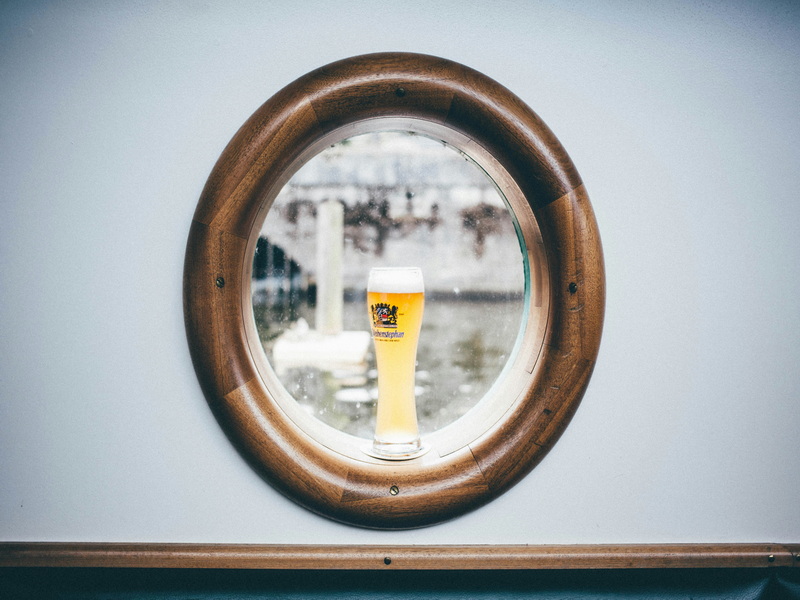English 




Views: 222 Author: Astin Publish Time: 2025-02-06 Origin: Site



Content Menu
● Understanding Aluminum Storm Windows
>> Benefits of Aluminum Storm Windows
>> Signs Your Storm Windows Need Painting
● Preparation: The Key to a Successful Paint Job
>> Gathering Materials and Tools
● Environmental Considerations
● FAQ
>> 1. How long does it take to paint aluminum storm windows?
>> 2. Can I use spray paint instead of brush-on paint?
>> 3. Do I need to remove the storm windows to paint them?
>> 4. How often should I repaint my aluminum storm windows?
>> 5. Can I paint over old paint on aluminum storm windows?
Aluminum storm windows are an essential component of many homes, providing protection from the elements and improving energy efficiency. Over time, these windows can become weathered, oxidized, or simply outdated in appearance. Painting aluminum storm windows is an excellent way to refresh their look and extend their lifespan. This comprehensive guide will walk you through the process of painting aluminum storm windows, ensuring a professional finish that will enhance the overall appearance of your home.

Before diving into the painting process, it's important to understand what aluminum storm windows are and why they might need painting. Aluminum storm windows are secondary windows installed outside or inside of the main windows. They're designed to provide an extra layer of insulation and protection against harsh weather conditions.
The aluminum used in these windows is durable and resistant to corrosion, but it can oxidize over time, leading to a chalky or dull appearance. Painting these windows not only improves their aesthetics but also adds an extra layer of protection against the elements.
Aluminum storm windows offer several advantages:
1. Energy Efficiency: They provide an additional barrier against heat loss in winter and heat gain in summer.
2. Noise Reduction: Storm windows can significantly reduce outside noise.
3. Protection: They shield your primary windows from damage caused by wind, rain, and debris.
4. Cost-Effective: Compared to replacing windows, installing or maintaining storm windows is more economical.
Look out for these indicators that suggest it's time to paint your aluminum storm windows:
1. Fading or discoloration of the current finish
2. Visible oxidation or a chalky residue on the surface
3. Peeling or flaking of the existing paint
4. Rust spots or corrosion on the frame
5. General wear and tear that affects the window's appearance
To paint aluminum storm windows effectively, you'll need the following materials and tools:
- Mild detergent and water
- Sponges and clean rags
- Fine-grit sandpaper (400-grit)
- Tack cloth
- Painter's tape
- Drop cloths
- Self-etching primer
- Exterior-grade acrylic or latex paint formulated for metal
- Paint brushes or small foam rollers
- Protective gear (gloves, goggles, and a mask)
The first step in preparing your aluminum storm windows for painting is thorough cleaning. This step is crucial for ensuring proper paint adhesion.
1. Remove the storm windows if possible and lay them flat on a work surface.
2. Mix mild detergent with warm water.
3. Using a sponge, wash the entire surface of the window frame, paying special attention to any dirt, grime, or chalky residue.
4. Rinse the frames thoroughly with clean water.
5. Dry the frames completely with clean rags or allow them to air dry.
After cleaning, lightly sand the aluminum surface to create a slightly rough texture that will help the primer and paint adhere better.
1. Use fine-grit sandpaper (400-grit) to lightly scuff the entire surface of the aluminum frame.
2. Be careful not to sand too aggressively, as you don't want to damage the aluminum.
3. After sanding, wipe down the surface with a tack cloth to remove any dust or debris.
Before you start painting, it's important to protect areas you don't want to be painted:
1. Use painter's tape to mask off any glass panes, weather stripping, or hardware.
2. Cover the surrounding area with drop cloths to protect from paint splatters.
Before painting, inspect the windows for any damages:
1. Fill small dents or holes with auto body filler.
2. Sand the repaired areas smooth once the filler has dried.
3. For larger damages, consult a professional or consider replacing the window.

Applying a primer is a crucial step in painting aluminum storm windows.
1. Choose a self-etching primer specifically designed for metal surfaces.
2. Apply the primer in thin, even coats using a brush or small foam roller.
3. Allow the primer to dry completely according to the manufacturer's instructions.
Once the primer is dry, you're ready to apply the paint.
1. Select an exterior-grade acrylic or latex paint formulated for metal surfaces.
2. Apply the paint in thin, even coats using a brush or small foam roller.
3. Allow each coat to dry completely before applying the next.
4. Apply at least two coats of paint for optimal coverage and durability.
After the final coat of paint has dried:
1. Carefully remove the painter's tape while the paint is still slightly wet to avoid peeling.
2. If any paint has seeped under the tape onto the glass, use a razor blade to carefully scrape it off.
3. Reattach any hardware that was removed during the process.
To ensure your newly painted aluminum storm windows last for years to come:
1. Clean the windows regularly with mild soap and water.
2. Avoid using abrasive cleaners or scrubbers that could damage the paint.
3. Inspect the windows annually for any signs of wear or damage, and touch up as needed.
- Spring: Clean thoroughly and check for any winter damage.
- Summer: Ensure proper ventilation to prevent condensation.
- Fall: Check weatherstripping and seals before cold weather sets in.
- Winter: Remove snow and ice buildup promptly to prevent damage.
While painting your aluminum storm windows, consider these additional steps to improve energy efficiency:
1. Check and replace weatherstripping if necessary.
2. Apply caulk around the edges of the storm window frame to seal any gaps.
3. Consider applying a low-emissivity (low-E) film to the glass to further reduce heat transfer.
Selecting the right color for your aluminum storm windows can significantly impact your home's appearance:
1. Consider your home's overall color scheme and architectural style.
2. Neutral colors like white, beige, or gray are versatile and timeless.
3. Darker colors can add depth and contrast but may absorb more heat.
4. Test paint samples on a small, inconspicuous area before committing to a color.
When painting aluminum storm windows, keep these eco-friendly tips in mind:
1. Choose low-VOC (Volatile Organic Compounds) paints to reduce harmful emissions.
2. Dispose of paint and primer containers properly at designated recycling centers.
3. Use water-based paints when possible, as they're easier to clean up and less harmful to the environment.
Painting aluminum storm windows is a cost-effective way to update the appearance of your home and protect these important fixtures. By following this comprehensive guide, you can achieve professional-looking results that will enhance your home's curb appeal and extend the life of your storm windows. Remember, the key to a successful paint job lies in thorough preparation and using the right materials. With patience and attention to detail, your aluminum storm windows will look as good as new.
The process may seem time-consuming, but the results are well worth the effort. Not only will you improve the appearance of your home, but you'll also be taking an important step in maintaining and protecting your storm windows. This can lead to improved energy efficiency and potentially lower heating and cooling costs.
As you embark on this home improvement project, remember that practice makes perfect. If you're new to painting, consider starting with a less visible window to hone your technique. Don't be discouraged if the first attempt isn't perfect – with each window, your skills will improve.
Lastly, always prioritize safety throughout the process. Ensure proper ventilation when working with paints and primers, and don't hesitate to ask for help when removing or reinstalling heavy storm windows.
By investing time in painting your aluminum storm windows, you're not just improving their appearance – you're extending their lifespan, enhancing your home's energy efficiency, and boosting its overall value. With your newly painted storm windows, you'll be ready to face whatever weather comes your way, all while enjoying a fresh, updated look for your home.

Here are some frequently asked questions about painting aluminum storm windows:
The entire process, including preparation, priming, and painting, can take 2-3 days. This allows for proper drying time between coats.
Yes, you can use spray paint designed for metal surfaces. However, brush-on paint often provides better coverage and control, especially for beginners.
While it's not absolutely necessary, removing the windows makes the job easier and helps ensure a more even application of paint.
With proper care, a good paint job can last 5-10 years. However, you may need to touch up or repaint sooner depending on weather conditions and wear.
Yes, but you'll need to properly clean and sand the old paint to ensure good adhesion of the new paint. If the old paint is peeling or in poor condition, it's best to remove it completely before repainting.
[1] https://www.finehomebuilding.com/1996/07/01/painting-aluminum-storm-windows
[2] https://www.houzz.com/discussions/6447224/painting-exterior-aluminum-window-frames
[3] https://www.gm-cx.com/how-to-paint-aluminum-storm-windows.html
[4] https://www.doityourself.com/stry/how-to-paint-triple-track-storm-windows
[5] https://www.stepbystep.com/How-to-Paint-an-Exterior-Aluminum-Storm-Window-and-Give-it-a-Fresh-New-Look-174602/
[6] https://doorsixteen.com/2014/05/05/painting-aluminum-storm-windows/
[7] https://www.weekand.com/home-garden/article/paint-aluminum-storm-windows-18047767.php
[8] https://www.youtube.com/watch?v=KdanPL9bamg
[9] https://www.reddit.com/r/Oldhouses/comments/11bx232/exterior_painting_and_aluminum_storm_windows/
Top Aluminum Furnitures Manufacturers and Suppliers in Czech Republic
Top Aluminum Furnitures Manufacturers and Suppliers in Poland
Top Aluminum Furnitures Manufacturers and Suppliers in Belgium
Top Aluminum Furnitures Manufacturers and Suppliers in Finland
Top Aluminum Furnitures Manufacturers and Suppliers in Denmark
Top Aluminum Furnitures Manufacturers and Suppliers in Greece
Top Aluminum Furnitures Manufacturers and Suppliers in Portugal
Top Aluminum Furnitures Manufacturers and Suppliers in Austria
Top Aluminum Furnitures Manufacturers and Suppliers in Norway
Top Aluminum Furnitures Manufacturers and Suppliers in Sweden
